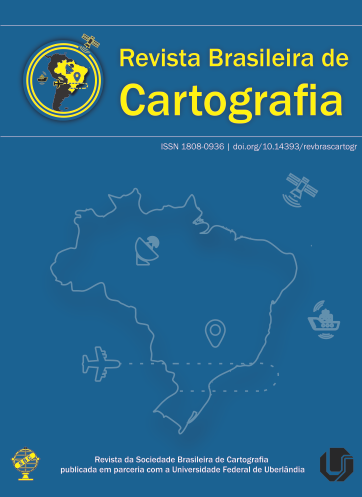Otimização da Integração de Topônimos por Similaridade Lexical
Conteúdo do artigo principal
Resumo
Feições identificáveis do mundo real são, por intermédio de funções de mapeamento, instanciadas em um Banco de Dados Geográfico (BDG) como representações dessa realidade. Essas representações são individualizadas pelos atributos especificadores da classe mapeada. Entre esses atributos estão pelo menos uma geometria e um nome identificador (topônimo) associado à chave primária. No entanto, diferentes produtores de dados interpretam a realidade com pequenas discrepâncias, tornando algumas representações de características mapeadas semelhantes, mas não idênticas. Em particular, os topônimos têm pequenas diferenças resultantes de modificações ao longo dos anos, da forma como são soletrados ou, também, devido a erros humanos no registro dos dados. Portanto, ao tentar integrar diferentes BDGs, por meio de topônimos, eles não favorecem um pareamento total, uma vez que os registros não são identificados como sendo representativos da mesma realidade. No caso específico da classe toponímia, isso ocorre principalmente devido a erros de digitação decorrentes do processo de inserção de dados, especialmente pela inversão no posicionamento dos caracteres dentro da palavra. Nesta pesquisa, foi desenvolvida uma melhoria no Coeficiente de Dados e comparada com o método original aplicado em três BDGs distintos. A análise foi baseada nas frequências de caracteres e bigramas existentes nessas bases. A melhoria proposta baseou-se na hipótese de que bigramas invertidos, como 'αβ' e 'βα', podem, segundo certos critérios, ser admitidos como semelhantes. A análise identificou os caracteres mais comuns e os bigramas mais frequentes nas bases, cuja associação com uma análise da distância normalizada em um teclado padrão, permitiu a identificação de uma série de pares de bigramas considerados semelhantes. Essa proposta permitiu um aumento médio de 0,58% no total de instâncias pareadas nos BDGs testados.
Downloads
Detalhes do artigo
Seção

Esta obra está licenciado com uma Licença Creative Commons Attribution 3.0 Unported License.
Autores que publicam nesta revista concordam com os seguintes termos:
- Autores mantém os direitos autorais e concedem à revista o direito de primeira publicação, com o trabalho simultaneamente licenciado sob a Licença Creative Commons Atribuição que permite o compartilhamento do trabalho com reconhecimento da autoria e publicação inicial nesta revista.
- Autores têm autorização para assumir contratos adicionais separadamente, para distribuição não-exclusiva da versão do trabalho publicada nesta revista (ex.: publicar em repositório institucional ou como capítulo de livro), com reconhecimento de autoria e publicação inicial nesta revista.
- Autores têm permissão e são estimulados a publicar e distribuir seu trabalho online (ex.: em repositórios institucionais ou na sua página pessoal) a qualquer ponto antes ou durante o processo editorial, já que isso pode gerar alterações produtivas, bem como aumentar o impacto e a citação do trabalho publicado (veja "O Efeito do Acesso Aberto").





